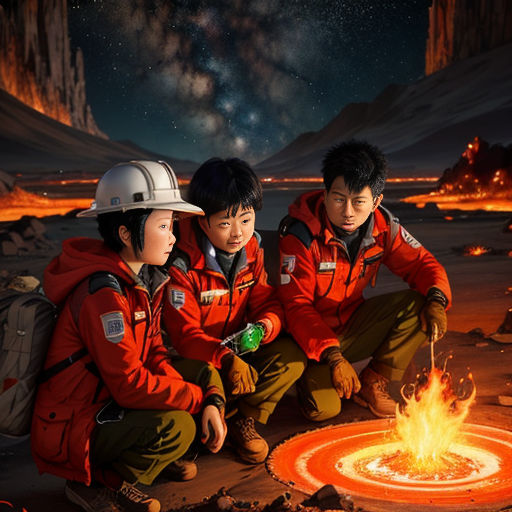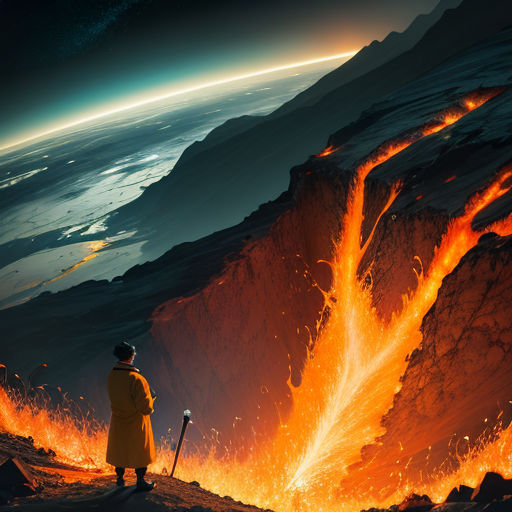
Journey to the Earth's Core
By Henry.

28 Oct, 2023

In the year 2500, human curiosity had led to advancements propelling us to the Earth's core. The mission was led by the world's leading geophysicist, Dr. Ada Chen.

Dr. Chen and her team designed a drill capable of withstanding intense heat and pressure, utilizing a new alloy of titanium and iridium.

The initial phase of drilling was relatively simple; the crust was a known entity. As they journeyed deeper, they encountered the mantle.

The mantle was composed of silicate rocks, flowing like a slow, hot liquid. It presented challenges, but the team persevered.

After months of drilling, they reached the outer core. The intense heat and liquid iron posed unprecedented challenges.

Nevertheless, Dr. Chen and her team, through their perseverance, were able to keep the drill operational, and they ventured further.

Finally, they reached the inner core. The conditions were unimaginable; with temperatures exceeding 5700°C and extreme pressure.

The team marveled at the data streaming back. The inner core, contrary to previous theories, was not just a solid ball of iron.

It was a complex structure with layers of varying densities and temperatures, possibly due to the presence of lighter elements.

The team also discovered the existence of colossal geo-structures. These were much larger than any geological formations on the surface.

They also identified that the core was not perfectly round, but had an elongated shape. This could explain the anomalies in Earth's magnetic field.

Dr. Chen hypothesized that these anomalies might be due to the geo-structures affecting the flow of the molten iron in the outer core.

The mission also detected seismic waves bouncing around the core in an unusual manner, suggesting complex geological processes at play.

The data gathered from this exploration was groundbreaking and opened up a whole new chapter in Earth sciences.

The findings by Dr. Chen and her team challenged the existing theories about the Earth's core and forced the scientific community to rethink.

The information about the presence of lighter elements and the complex geo-structures would revolutionize our understanding of the Earth's formation.

The data on the core's shape would provide valuable insights into the Earth's magnetic field and possibly predict future anomalies.

The detection of unusual seismic wave patterns could lead to a better understanding of earthquakes and their prediction.

This exploration was not just a journey to the Earth's core; it was a journey into the unknown, pushing the boundaries of human knowledge.

Dr. Chen's groundbreaking exploration has brought us closer to understanding our planet, and perhaps even the formation of other celestial bodies.

The journey of Dr. Chen and her team was an epitome of human curiosity, perseverance, and the relentless pursuit of knowledge.

This monumental achievement was not the end but a beginning. It opened up a plethora of questions that needed answers.

The successful exploration of the Earth's core set the stage for future deep-Earth missions and further scientific inquiries.

The exploration served as a testament to the resilience and capability of humanity, forever changing the way we perceive our planet.

Thus, the journey to the Earth's core was not merely a scientific expedition; it was a leap into the future, a stride into the unknown.

The exploration was a testament to human achievement, a beacon of hope and inspiration for generations to come.

And as the data continued to flow, Dr. Chen knew that this was just the beginning of a new era in the scientific exploration of our planet.